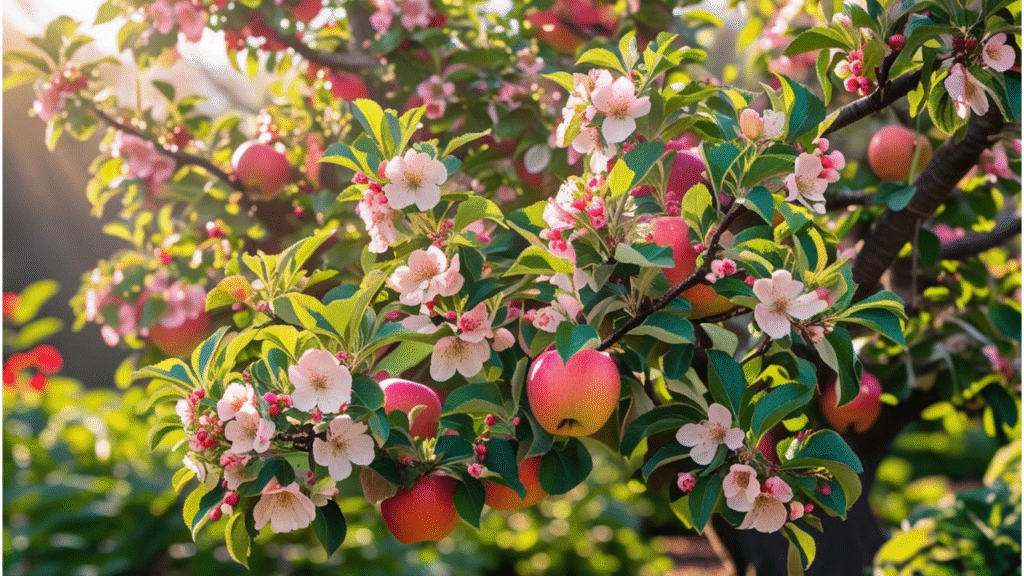
How to Grow and Care for a Flowering Apple Tree: Tips for a Thriving Blossom Season
Imagine stepping into your garden on a bright spring morning, greeted by the vibrant blossoms of a flowering apple tree. Not only does it enhance the beauty of your space, but it also attracts pollinators, making your garden thrive. 🌿 However, growing and caring for a flowering apple tree can be a bit challenging if you don’t know the right techniques.
If you’re dreaming of a flourishing apple tree with stunning flowers and perhaps even fruit, you’re in the right place! In this guide, we’ll walk you through easy-to-follow steps that will help your flowering apple tree bloom to its fullest potential. Whether you’re a gardening beginner or have some experience, you’ll find practical tips on everything from planting and pruning to pest management. Let’s get started on making your tree the star of your garden! 🌳✨
Table of Contents
Toggle🌸 Understanding Flowering Apple Trees 🌸
Flowering apple trees 🌳 aren’t just beautiful 🌷—they offer a host of benefits for your garden 🏡! From vibrant spring blossoms 🌸 to potential fruit-bearing trees 🍏, they’re a rewarding addition to any landscape 🌳. But before diving into planting 🌱 and care 🧑🌾, it’s important to understand the basics of these lovely trees 🌳.
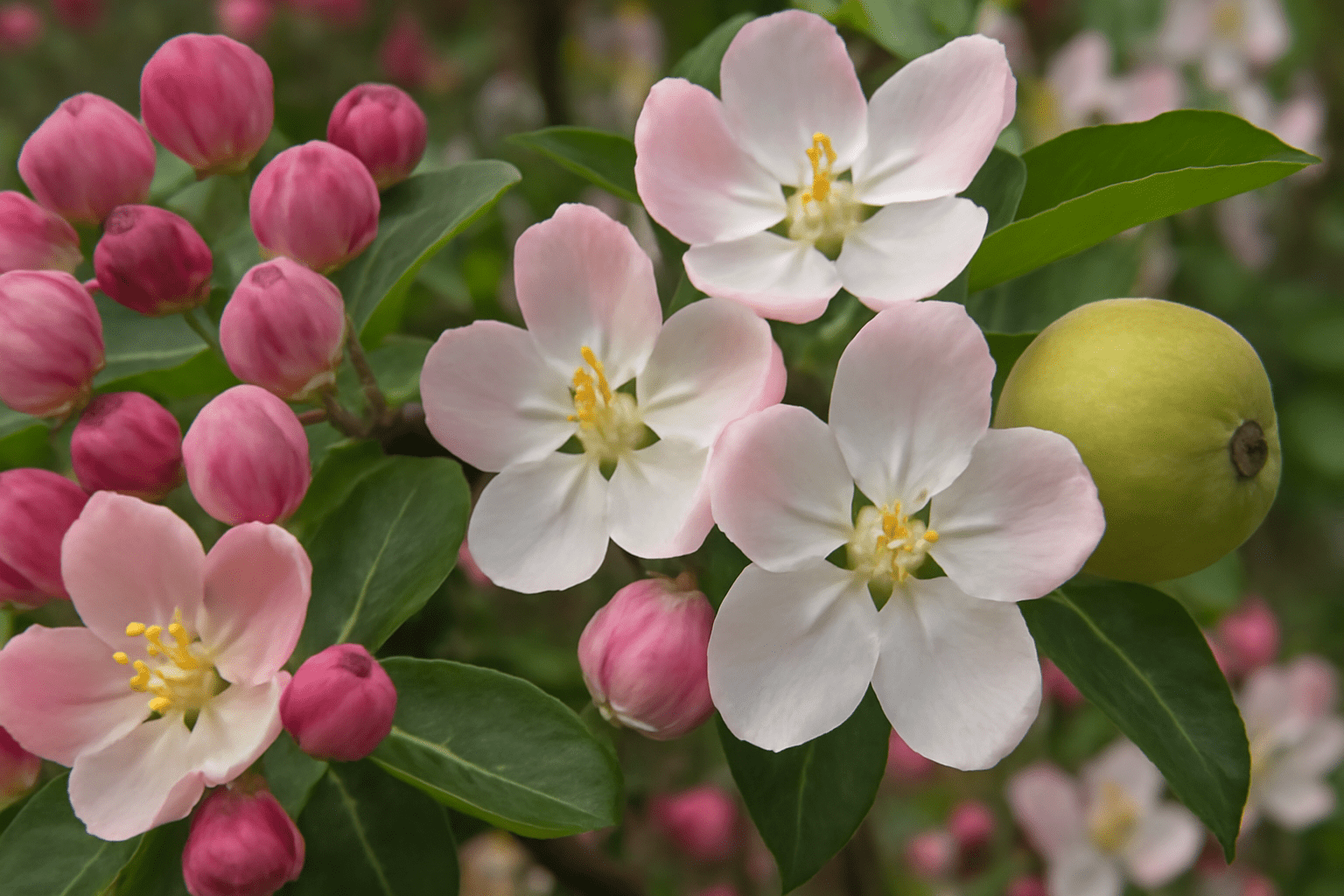
🌼 What Are Flowering Apple Trees? 🌼
A flowering apple tree 🌳 is a variety of apple tree 🍏 that produces stunning blossoms 🌸, typically in spring 🌷. While some types bear fruit 🍏, others are purely ornamental 🌺, designed to offer beautiful flowers 🌸 rather than apples 🍏. These trees 🌳 belong to the same family as regular apple trees 🍏 but are specifically cultivated for their showy flowers 🌺.
Ornamental vs. Fruit-bearing 🌳: While ornamental varieties 🌸 focus on their blooms 🌷, fruit-bearing types 🍏 also give you apples 🍏 in late summer 🌞 or fall 🍂.
Flowering seasons 🌸: Depending on the variety 🌳, flowering apple trees 🌳 usually bloom in early spring 🌷, creating a burst of color 🎨 before most other trees 🌳 even wake up from winter ❄️.
🌿 Why Choose a Flowering Apple Tree? 🌿
Adding a flowering apple tree 🌳 to your garden 🏡 can completely transform the space 🏞️. Here’s why many gardeners choose them:
- Beauty and Color 🌸: These trees 🌳 are known for their stunning blooms 🌸 in hues of pink 💖, white 🤍, and red ❤️, making them the focal point of any garden 🏡.
- Pollinator-Friendly 🐝: Flowering apple trees 🌳 attract bees 🐝 and butterflies 🦋, helping pollinate other plants 🌱 in your garden 🏡.
- Fruit and Blossoms 🍏🌸: Some varieties 🍏 also provide apples 🍏, offering both aesthetic beauty 🌸 and functional fruit 🍏 for your kitchen 🍽️.
- Year-Round Interest 🌳: They bring seasonal beauty 🌷 and even provide winter ❄️ interest with their bare branches 🌳 and unique structure 🌿.
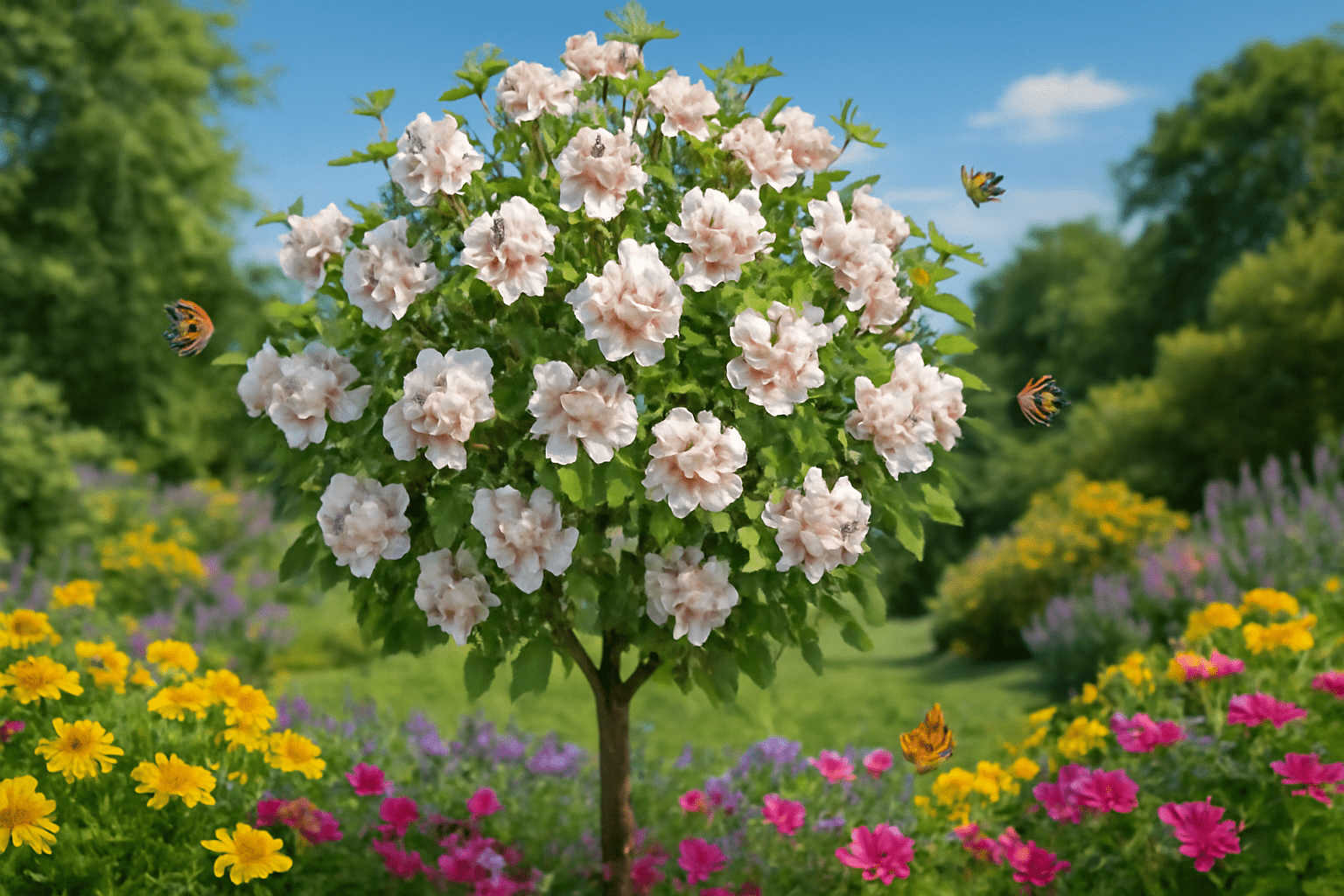
🌺 Varieties of Flowering Apple Trees 🌺
There are a variety of flowering apple tree species 🌳 to choose from, depending on what you’re looking for 🧐. Here are a few favorites 🌟:
- Crabapple Trees 🌳: These small trees 🌳 are incredibly popular for their dense 🌿, colorful blossoms 🌸. Some varieties 🍏 also produce small apples 🍏 that can be used for jams 🍯 or jelly 🍇.
- Flowering Fuji 🍏: Known for its beautiful white blooms 🤍 and small apples 🍏, the Flowering Fuji 🌸 can provide both beauty 🌷 and fruit 🍏.
- Red Delicious 🍏: While typically known for its fruit 🍏, the Red Delicious variety 🍎 also features lovely pink 🌸 blossoms during the spring 🌷.
By understanding the different types of flowering apple trees 🌳 and their unique benefits 🎯, you’re better equipped 💪 to select the right one for your garden 🏡. Ready to dive deeper 🏊♂️ into how to grow 🌱 and care 🧑🌾 for your tree 🌳? Keep reading 📖 to get started on making your tree 🌳 the perfect addition to your space 🏡! 🌱
🌸 Selecting the Right Flowering Apple Tree for Your Garden 🌸
Choosing the right flowering apple tree 🌳 for your garden 🏡 can be a game-changer 🎮 in ensuring a beautiful 🌷 and thriving tree 🌳. With the variety of options available 🌱, it’s important to consider factors like size 📏, climate 🌞, and maintenance needs 🧑🌾 to make sure you select the perfect one 🌟. Let’s break it down step by step 🧑🍳! 🌳✨
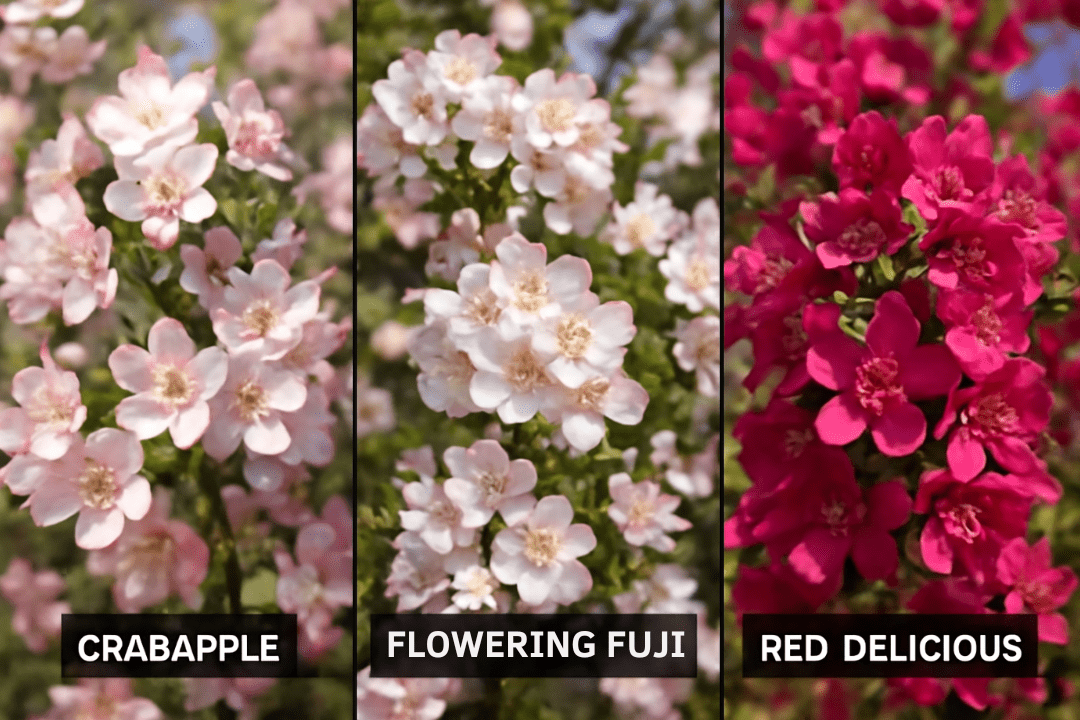
🌞 How to Choose the Best Variety for Your Space 🏡
The first step 🧑🌾 in selecting a flowering apple tree 🌳 is to understand your garden’s unique needs 🌿. Here are some key factors to consider:
- Size of Your Garden 📏: Apple trees 🌳 come in a range of sizes 📏, from small dwarf varieties 🌱 to larger, standard trees 🌳.
- Small spaces 🏠: Opt for dwarf varieties like Crabapple 🍏 or Flowering Fuji 🌸 that won’t overwhelm your garden 🏡.
- Larger gardens 🌳: You can choose bigger varieties 🍏, like the Red Delicious 🍎, which grows to be more expansive 🌳 and requires more space 🌿.
- Climate Zone 🌞: Make sure the variety 🍏 you choose is suited to your local climate 🌞. Flowering apple trees 🌳 thrive in regions with cold winters ❄️ and moderate summers 🌞.
- Use the USDA Plant Hardiness Zone Map 🗺️ to find out which tree 🌳 varieties will do best in your area 🌍.
- Tip: If you live in a warm climate 🌞, go for varieties 🍏 known for their heat tolerance 🌡️, like Crabapple 🍏 or Flowering Fuji 🌸.
- Bloom Time 🌸: Some varieties 🌳 bloom earlier or later than others. If you want your garden 🌿 to be a continuous show of flowers 🌸, select different varieties 🌳 that bloom at varying times in spring 🌷.
- Crabapple trees 🌳 bloom in early spring 🌷, while Flowering Fuji 🌸 has a later bloom time ⏰, ensuring your garden 🌿 has blossoms 🌸 throughout the season 🗓️.
🌷 Where to Plant Your Flowering Apple Tree 🌷
The location 📍 of your flowering apple tree 🌳 plays a huge role in its success 🌱. Here’s what to keep in mind 🧑🌾:
- Sunlight 🌞: Apple trees 🌳 need full sunlight ☀️ to thrive 🌱. Ensure your tree 🌳 gets at least 6–8 hours of direct sunlight 🌞 every day 🗓️.
- If you live in a particularly hot region 🌞, a location 🏡 that provides partial shade 🌿 during the hottest part of the day 🌞 can help protect the tree 🌳.
- Soil Conditions 🌍: Apple trees 🌳 prefer well-drained soil 🌱 that’s slightly acidic to neutral (pH 6.0-7.0). Make sure the soil 🌍 is not too heavy or clay-like 🏞️, as this can lead to root rot 💧.
- Quick Fix ⚡: Improve soil quality 🌱 by mixing in compost 🍂 to help with drainage 💦 and nutrient content 🧪.
- Space to Grow 🌳: Make sure to give your tree 🌳 enough space to spread its roots 🌱 and canopy 🌳.
- Tip: For standard-sized trees 🌳, ensure at least 10–15 feet of space 🌳 in all directions 🌱. Dwarf trees 🌱 need at least 4–5 feet 🏡.
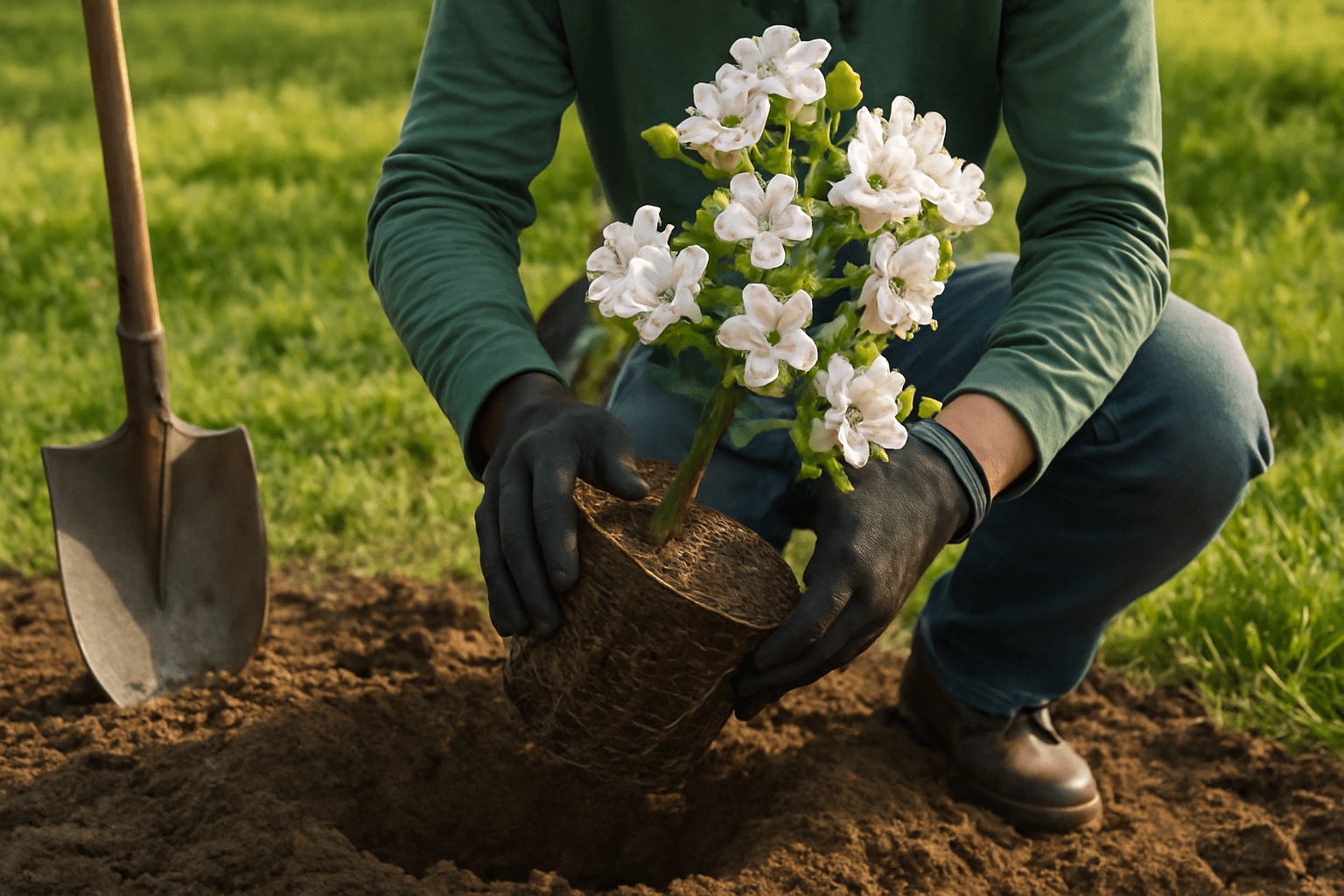
🌼 Top Flowering Apple Tree Varieties to Consider 🌼
Now that you know what to look for 👀, here are a few popular flowering apple tree 🌳 varieties 🍏 that are perfect for any garden 🏡:
- Crabapple Trees 🍏: These compact 🌿, ornamental trees 🌳 are ideal for small spaces 🏡 and produce vibrant blooms 🌸 in pinks 💖, reds ❤️, and whites 🤍. They can also yield small 🍏, decorative fruit 🍏.
- Flowering Fuji 🍏: A fantastic choice 🌟 for larger gardens 🌳, Flowering Fuji 🌸 offers both beautiful pink 💖 blooms 🌸 and small apples 🍏 that are delicious 😋 and perfect for making jams 🍯 or pies 🥧.
- Red Delicious 🍏: Known for its bright red apples 🍎, this tree 🌳 also features beautiful pinkish 🌸 blossoms 🌸 that bring extra color 🌈 to your garden 🏡 in the spring 🌷.
- Pink Snow 🌸: This variety 🍏 is great for gardeners 🌿 in cooler climates 🌡️ and produces soft pink 🌸 blossoms 🌸 that brighten up any space 🏡.
By understanding your garden’s space 🏡, climate 🌞, and what kind of blossoms 🌸 you want, you’ll be able to pick the best flowering apple tree 🌳 for your needs 🌱. 🌿 Keep reading 📖 to learn about planting 🌱, care 🧑🌾, and maintenance tips 🛠️ to help your tree 🌳 thrive 🌱!
🌸 Planting Your Flowering Apple Tree 🌸
Planting a flowering apple tree 🌳 is an exciting step 🏃♂️ toward transforming your garden 🏡 into a colorful, lively space 🌈. With the right preparation 🧑🌾 and care 🧑🍳, your tree 🌳 will have the best chance to thrive 🌱 and bloom beautifully 🌸. Let’s break down the process 📋 so it’s easy and stress-free 😌! 🌳✨
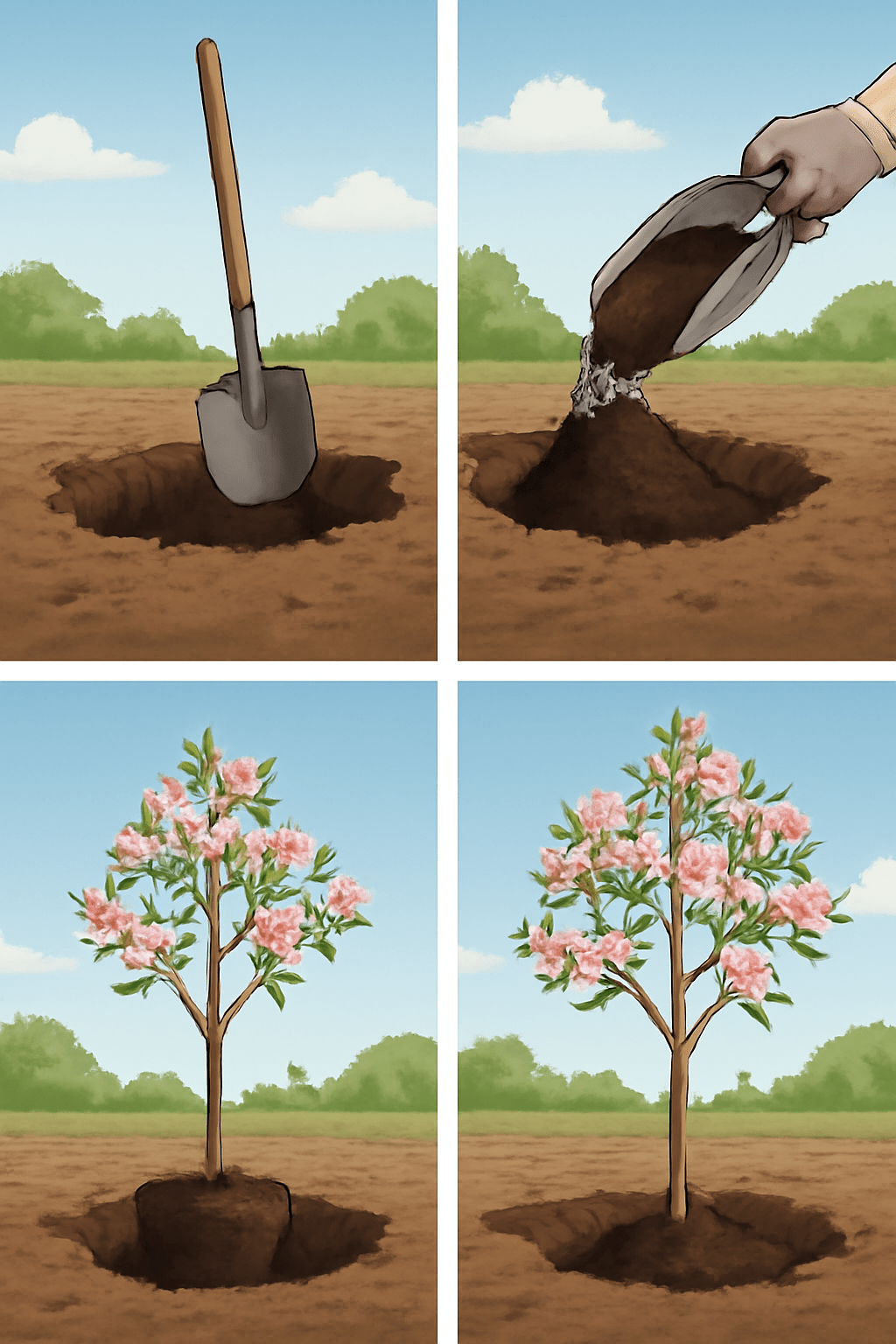
🌿 Step-by-Step Guide to Planting 🌿
Planting your flowering apple tree 🌳 correctly is key 🔑 to its success 🏆. Here’s a simple, beginner-friendly guide 👨🍳:
- Choose the Right Spot 📍:
- Sunlight 🌞: Ensure your tree 🌳 will receive at least 6–8 hours of direct sunlight 🌞 per day 🗓️.
- Soil 🌍: Apple trees 🌳 prefer well-drained, slightly acidic soil 🌱. Make sure the planting spot 📍 isn’t prone to standing water 💦.
- Prepare the Soil 🧑🌾:
- Dig a Hole 🕳️: Dig a hole that is twice as wide as the root ball 🌱 and just as deep 🔽. This allows the roots 🌱 to spread out easily.
- Soil Amendment 🌾: Mix in some compost 🍂 to improve soil structure 🌱 and drainage 💧. If your soil 🌍 is too heavy (like clay 🌱), add some sand or organic matter 🍂 to help it drain better 🌱.
- Position the Tree 🌳:
- Root Ball Level 🪴: Place the tree 🌳 in the hole 🕳️, ensuring the top of the root ball 🌱 is level with the surrounding soil 🌍. Planting too deep 🌱 can cause the tree 🌳 to suffocate 😷, while planting too shallow 📏 can expose the roots 🌱.
- Tree Orientation 🌳: Make sure the tree 🌳 is upright and facing the best direction for sunlight ☀️. Adjust the tree 🌳 if needed before filling the hole 🕳️.
- Fill the Hole 🕳️:
- Backfill 🏡: Gently fill the hole 🕳️ with the prepared soil mixture 🌱, tamping it down lightly ✋ as you go to remove air pockets 🏞️.
- Water 💧: Once the hole 🕳️ is filled, water 💧 the tree 🌳 generously to help settle the soil 🌱 and ensure good root contact 🦾.
💧 Watering Your Tree After Planting 💧
Proper watering 💦 is essential right after planting 🌱:
- Water Generously 💧: Immediately water 💧 the tree 🌳 to help settle the soil 🌱 around the roots 🌿.
- Keep the Soil Moist 🌍: For the first few months 🗓️, water 💧 your tree 🌳 regularly to keep the soil 🌱 moist but not soggy 💦. Check the soil 🌍 about 2 inches down ⬇️—if it’s dry, it’s time to water 💧.
- Avoid Overwatering 💧: Too much water 💦 can cause the roots 🌱 to rot 💀, so be mindful of the drainage 💧 and ensure the tree 🌳 is not sitting in water 💦.
🌱 When to Plant Your Flowering Apple Tree 🌱
The timing ⏰ of planting is crucial for ensuring healthy root establishment 🌱:
- Best Seasons 🌞:
- Fall 🍂: If you live in a mild climate 🌞, fall 🍂 is a great time ⏰ to plant 🌱, as it allows the roots 🌱 to establish before the cold winter ❄️ sets in.
- Spring 🌷: Spring 🌸 is ideal in colder climates 🌡️ where the ground 🌍 is thawed but not yet too hot 🔥.
- Tip 💡: Avoid planting 🌱 in the summer heat 🌞, as it can stress the tree 🌳 and stunt its growth 🌱.
🌸 Mulching Around the Tree 🌸
After planting 🌱, apply a layer of mulch 🍂 around the base of your tree 🌳:
- Why Mulch? 🍂: Mulch helps retain moisture 💧, suppresses weeds 🌿, and insulates the roots 🌱.
- How to Apply 🌱: Spread 2–3 inches of mulch 🍂 (like wood chips 🌲 or bark 🍃) around the base of the tree 🌳, but keep it away from the trunk 🌳 to prevent rot 💧.
🏡 Spacing for Multiple Trees 🏡
If you’re planting more than one flowering apple tree 🌳, make sure to space them properly 📏:
- Dwarf Trees 🌱: Plant dwarf varieties 🌳 at least 4–5 feet apart 🌱.
- Standard Trees 🌳: Larger varieties 🍏 need about 10–15 feet of space 🏡 between each tree 🌳 to allow for proper growth 🌱 and airflow 🌬️.
By following these simple steps 🧑🌾, you’ll be on your way 🚶♂️ to planting 🌱 a flowering apple tree 🌳 that will thrive 🌱 for years to come 🕰️. Stay tuned 📖 for the next section on caring 🧑🌾 for your tree 🌳 to ensure it blooms beautifully 🌸 each season! 🌱
🌸 Caring for Your Flowering Apple Tree 🌸
Once your flowering apple tree 🌳 is planted, it’s time ⏰ to shift focus to its ongoing care 🧑🌾. Proper attention to watering 💧, fertilization 🌱, pruning ✂️, and pest control 🐜 will help your tree 🌳 thrive and produce beautiful blossoms 🌸 year after year 🗓️. Let’s dive into the essential care steps 🧑🌾 that will keep your tree 🌳 healthy and happy 😌!

💧 Watering Your Flowering Apple Tree 💧
Watering 💦 is one of the most important aspects of tree 🌳 care, especially during its first few years of growth 🌱:
- Regular Watering 💦: Ensure the tree 🌳 receives consistent moisture 💧, especially during dry spells 🌞. Deep watering 🌊 is essential to encourage deep root growth 🌱.
- How Much to Water 🌊: Water 💦 the tree 🌳 at least once a week 🗓️ during dry periods 🌞, and more often in very hot weather 🌞. A good rule of thumb 🧠 is to water 💧 the tree 🌳 when the top 2–3 inches of soil 🌍 feel dry to the touch ✋.
- Signs of Overwatering 💦: If the leaves 🍃 turn yellow 🟨 or you notice moldy patches near the base of the tree 🌳, you might be watering 💦 too much. Ensure the soil 🌍 has proper drainage 💧.
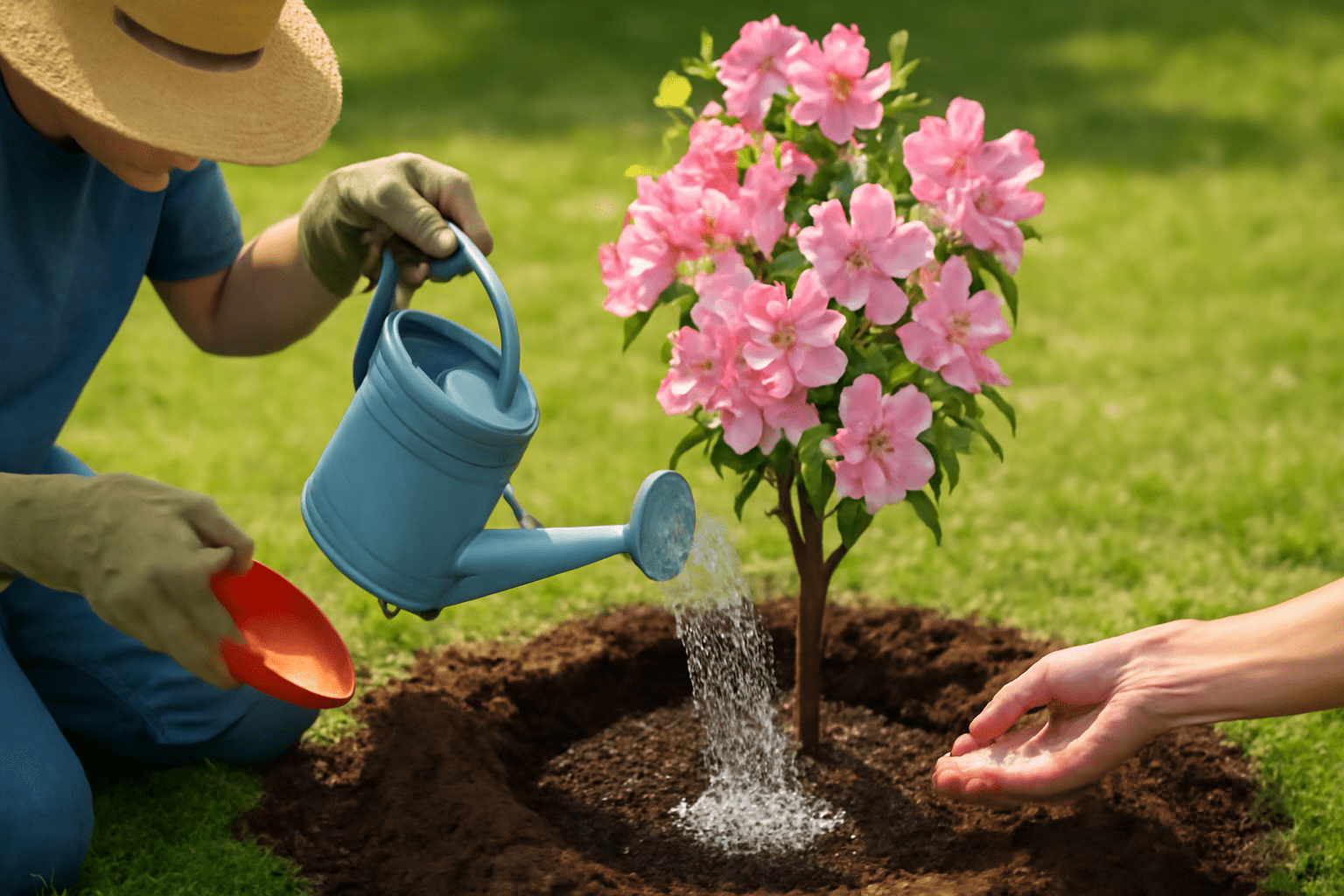
🌿 Fertilizing Your Flowering Apple Tree 🌿
Proper fertilization 🧑🌾 will help your flowering apple tree 🌳 grow strong 💪 and produce vibrant blooms 🌸. However, it’s important ⚠️ to avoid over-fertilizing, as this can lead to excessive growth 🌱 at the expense of flowers 🌸 and fruit 🍏.
- When to Fertilize 🌱: Apply a balanced ⚖️, slow-release fertilizer 🧑🌾 in early spring 🌷, just as the tree 🌳 begins to grow 🌱. This provides essential nutrients 🧪 as the tree 🌳 enters its active growing season 🌱.
- What to Use 🧪: Choose a fertilizer 🌱 with equal parts nitrogen 🌿, phosphorus 🌾, and potassium 🌰 (such as a 10-10-10 mix) to support overall tree health 🌳.
- Avoid Excess Nitrogen ❌: Too much nitrogen 🌱 can cause the tree 🌳 to grow too quickly 🏃♂️, resulting in fewer blossoms 🌸 and weak wood 🌳. Stick to the recommended application rate 📏.
✂️ Pruning and Shaping Your Flowering Apple Tree ✂️
Pruning ✂️ your flowering apple tree 🌳 correctly is key 🔑 to keeping it healthy 🌱 and maximizing its blooms 🌸. Regular pruning ✂️ also helps improve air circulation 🌬️ and reduces the risk of disease 🦠.
- When to Prune ✂️: The best time 🕰️ to prune is in late winter ❄️ or early spring 🌷 before new growth begins 🌱. Avoid pruning during the growing season 🌞, as this can damage the tree 🌳 and reduce flower production 🌸.
- What to Prune ✂️: Focus on removing dead ❌, damaged 🦠, or diseased branches 🍂 first. Then, trim any branches 🌿 that cross or rub against each other ↔️.
- Shaping the Tree 🌳: Shape the tree 🌳 by removing old, non-productive wood 🍂. This encourages new growth 🌱 and flower production 🌸. If you’re aiming for a tree 🌳 with a pleasing shape 🏡, remove lower branches 🌿 to create a central leader structure 🌳.
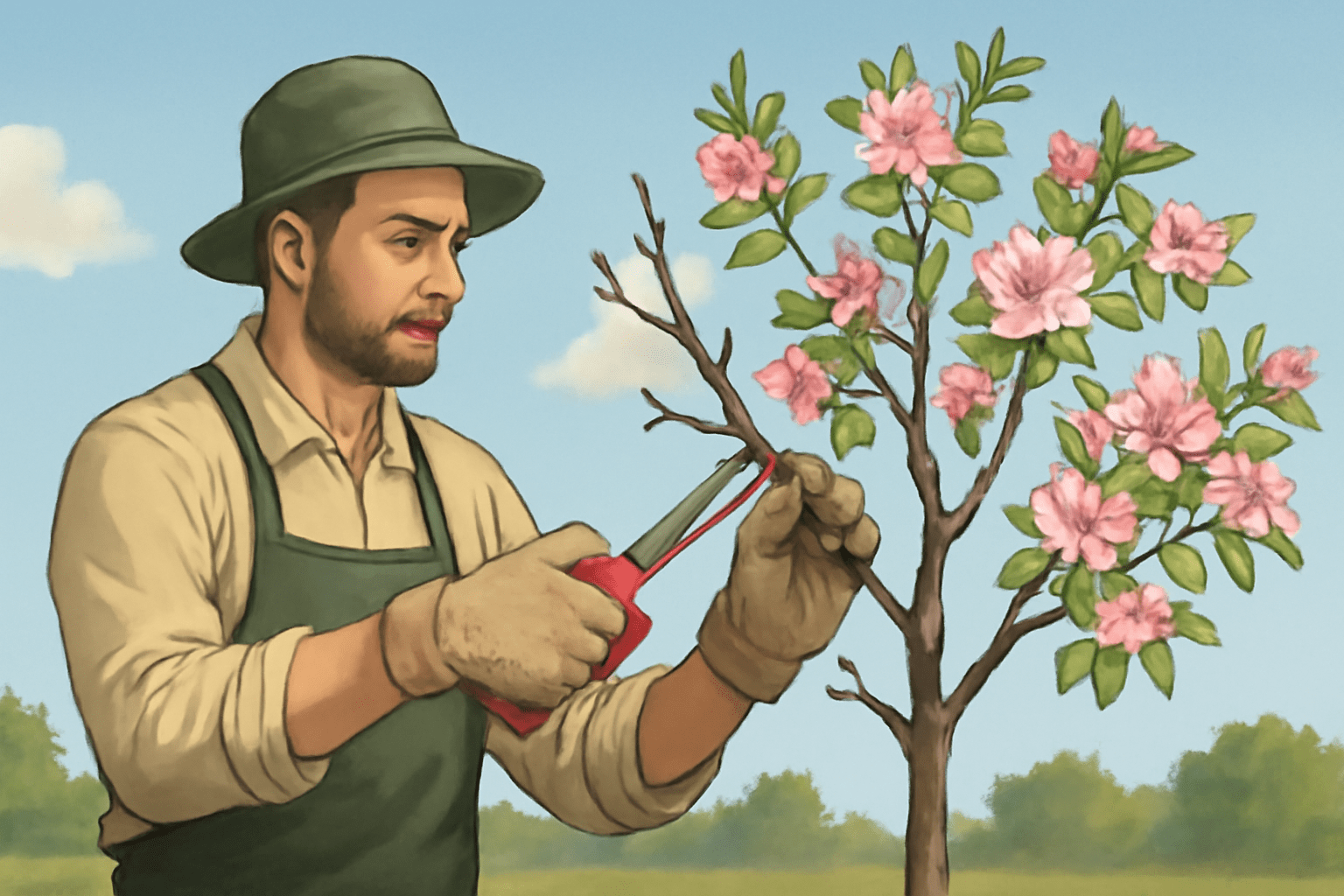
🌱 Pest and Disease Management 🌱
Like all trees 🌳, flowering apple trees 🌳 are susceptible to pests 🐜 and diseases 🦠. Regular inspection 🔍 and preventive measures 🧑🌾 are key 🔑 to keeping your tree 🌳 healthy 🌱.
- Common Pests 🐜: Look out for aphids 🐞, spider mites 🕷️, caterpillars 🐛, and scale insects 🦠. These pests 🐜 can damage leaves 🍃, flowers 🌸, and fruit 🍏.
- Solution 💡: Use organic insecticides 🧪 or insecticidal soap 🧴 to control pests 🐜. You can also spray the tree 🌳 with a strong jet of water 💦 to remove pests 🐜 naturally 🌱.
- Diseases to Watch For 🦠:
- Apple Scab 🦠: This fungal disease 🦠 causes dark spots on leaves 🍃 and fruit 🍏. To prevent it, clean up fallen leaves 🍂 and fruit 🍏 and avoid overhead watering 💦.
- Fire Blight 🔥: This bacterial disease 🦠 causes leaves 🍃 to wilt and turn black 🖤. Prune infected branches 🌿 and dispose of them immediately 🗑️ to prevent the spread of disease 🦠.
- Powdery Mildew 🦠: A fungal infection 🦠 that appears as a white, powdery coating on leaves 🍃. Treat with fungicides 🧴 to keep it under control ⚖️.
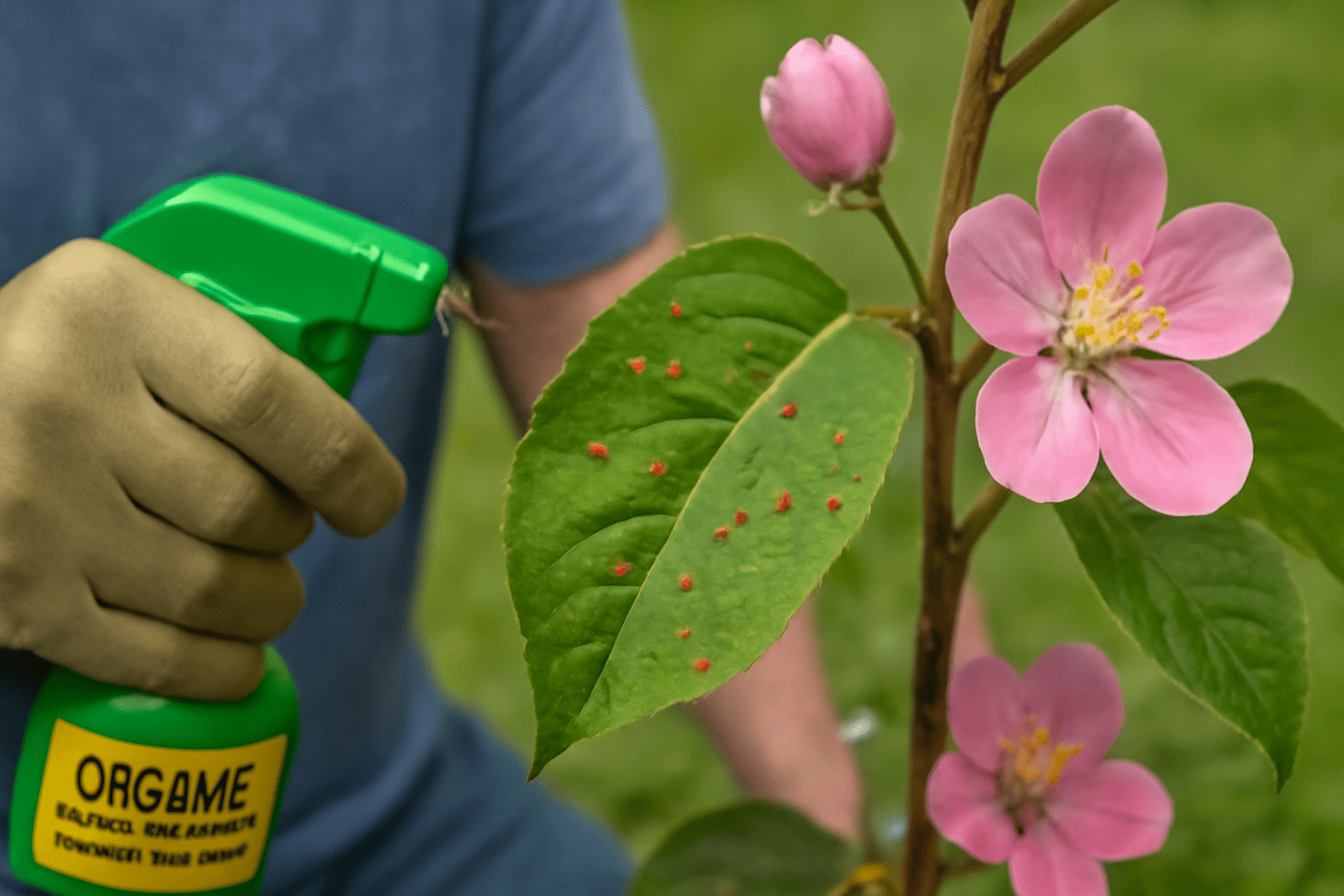
🍎 Supporting Pollination and Fruit Production 🍎
If your flowering apple tree 🌳 is a fruit-bearing variety 🍏, promoting good pollination 🐝 will help you get the best fruit 🍏 yields.
- Pollination Tips 🐝: Apple trees 🌳 are usually not self-pollinating ❌, so it’s important to plant 🌱 at least two different varieties 🌳 of apple trees 🍏 nearby. This encourages cross-pollination 🌷 and increases fruit 🍏 production.
- Thin the Fruit 🍏: Once the tree 🌳 starts producing fruit 🍏, thin the apples 🍏 to ensure the remaining fruit 🍏 grows larger 🥧 and more robust 💪. Aim for about 4–6 inches between each fruit 🍏.
🌸 Mulching for Healthier Growth 🌸
Mulch 🍂 helps protect your flowering apple tree 🌳 from extreme temperatures 🌞❄️, reduces weed growth 🌿, and keeps the soil 🌍 moist 💧.
- How to Apply 🌱: Spread a 2–3 inch layer of organic mulch 🍂, such as wood chips 🌲 or bark 🍃, around the base of the tree 🌳. Be sure to keep the mulch 🍂 a few inches away from the trunk 🌳 to avoid rot 💧.
- Benefits of Mulch 🍂: In addition to protecting the roots 🌱, mulch 🍂 helps maintain soil moisture 💧 and adds nutrients 🧪 to the soil 🌍 as it decomposes 🔄.
By following these care tips 🧑🌾, your flowering apple tree 🌳 will thrive 🌱 and reward you with stunning blooms 🌸 and, potentially, delicious fruit 🍏. 🌳 Keep an eye 👀 on its growth 🌱, and be proactive 🧑🌾 with watering 💧, fertilizing 🌱, and pruning ✂️ to ensure it remains healthy 🌱 year after year 🗓️. Ready to learn more 📖 about troubleshooting common tree 🌳 problems? Keep reading 📖! 🌱
🌸 Maximizing Blossom and Fruit Production 🌸
Now that your flowering apple tree 🌳 is well-established, it’s time to focus on boosting 📈 its bloom 🌸 and fruit 🍏 production! With a little extra care 🧑🌾 and attention 👀, you can ensure your tree 🌳 not only looks stunning 🌷 but also produces plenty of fruit 🍏. Here’s how to make the most of your tree’s blossoming potential 🌸. ✨
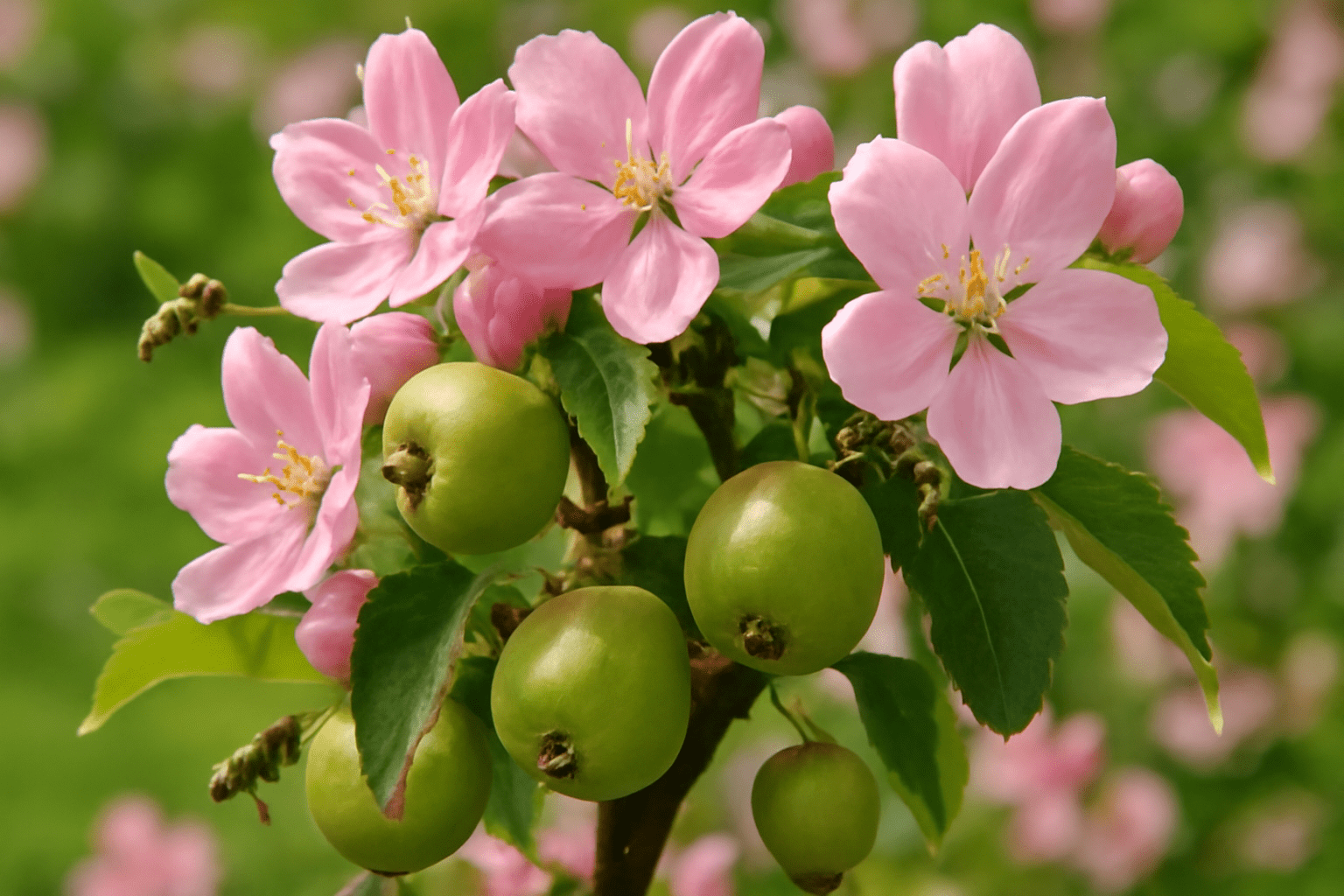
🌷 Encouraging More Blossoms 🌷
To get a beautiful 🌸, full display of flowers 🌷, you’ll need to optimize the conditions for blooming 🌸. Here are some tips 💡:
- Proper Pollination 🐝: Flowering apple trees 🌳 typically require cross-pollination 🔄 to produce a lot of blooms 🌸 and fruit 🍏. Plant at least two varieties 🌳 of flowering apple trees 🍏 nearby to ensure proper pollination 🐝.
- Tip 💡: Plant varieties 🌳 with overlapping bloom times 🕰️ to increase cross-pollination opportunities 🌱.
- Pruning for Blooms ✂️: Regular pruning ✂️ is key 🔑 to promoting healthy flower production 🌸. By removing old, non-productive wood 🍂, you allow new growth 🌱 that is more likely to flower 🌸.
- Prune early in the spring 🌷 to avoid cutting off potential flower buds 🌸.
- Remove any suckers 🍃 or water sprouts 🌱 that grow vertically 🆙, as these tend to use up energy ⚡ without contributing to flowers 🌸.
- Right Amount of Fertilizer 🌱: While fertilizing 🧑🌾 is important, too much nitrogen 🌱 can cause your tree 🌳 to grow tall and leafy 🌿 without blooming 🌸. Choose a balanced fertilizer 🧪 that supports flower production 🌸.
- Apply a low-nitrogen fertilizer 🧪 to promote strong blossoms 🌸 rather than excessive foliage growth 🌿.
🍏 Boosting Fruit Production 🍏
If your flowering apple tree 🌳 is a fruit-bearing variety 🍏, here are a few essential tips 📝 to encourage abundant fruiting 🍏:
- Thinning the Fruit 🍏: Once your tree 🌳 begins to bear fruit 🍏, thinning it out 🍃 is crucial to ensure larger, healthier apples 🍏. If too many fruits 🍏 remain on the tree 🌳, they will be small 🧑🍳 and weak 💪.
- How to Thin 🍏: Remove excess fruit 🍏, leaving around 4-6 inches between each apple 🍏. This allows the remaining fruit 🍏 to grow larger and get more nutrients 🍽️.
- Proper Pollination 🐝: Just like with blossoms 🌸, adequate pollination 🐝 is essential for fruit 🍏 production. Without cross-pollination 🦋, the tree 🌳 may produce very few or no apples 🍏 at all.
- Tip 💡: Ensure there are other apple trees 🌳 nearby that bloom at the same time ⏰ to improve pollination rates 🐝.
- Prune with Purpose ✂️: Pruning ✂️ is not only about removing dead or damaged wood 🍂 but also about encouraging fruiting wood 🌱. Prune back old growth 🌱 to encourage fresh, productive branches 🌳 that will bear fruit 🍏.
- Regular Watering 💦: Consistent watering 💧, especially during dry spells 🌞, helps support fruit production 🍏. Ensure the tree 🌳 gets deep, thorough watering 💧, especially as fruit 🍏 begins to develop 🌱.
- Tip 💡: Water 💧 early in the morning 🌅 to reduce evaporation 🌞 and minimize the risk of fungal diseases 🦠.
- Support for Young Trees 🌱: Young fruiting trees 🌳 might need a little extra help 🧑🌾 to produce their first round of apples 🍏. If your tree 🌳 is still in its early years 🌱 of fruit production 🍏, be patient ⏳ and give it time to settle into its full productive cycle 🕰️.
🌸 Maintaining a Balanced Tree for Bloom and Fruit 🌸
While it’s important ⚖️ to encourage both flowers 🌸 and fruit 🍏, remember that your flowering apple tree 🌳 needs to maintain a balance ⚖️ between the two. Over-pruning ✂️ or focusing too much on fruit 🍏 production can impact the tree’s overall health 🧑🌾 and blooming ability 🌸.
- Balanced Care ⚖️: Ensure your tree 🌳 isn’t overloaded with fruit 🍏 at the expense of its flowers 🌸. Keeping the tree 🌳’s structure balanced 🌳 helps it produce both stunning flowers 🌸 and plenty of fruit 🍏.
- Rotate Focus 🔄: During the growing season 🌞, prioritize flower production 🌸 in the spring 🌷, then shift to supporting fruit 🍏 production during the summer months 🌞.
🌞 Temperature and Light Conditions 🌞
Apple trees 🌳 are sun-loving plants 🌞, so make sure your flowering apple tree 🌳 is getting enough light 💡. Too much shade 🌚 can hinder blooming 🌸 and fruiting 🍏. Additionally, proper temperature 🌡️ is crucial:
- Ideal Temperature 🌡️: Flowering apple trees 🌳 thrive in cooler spring temperatures 🌷 with warm summers 🌞. Frost 🥶 in late spring 🌷 can damage blossoms 🌸, so watch out for late frosts 🌨️.
- Keep it Cool at Night 🌙: Apple trees 🌳 benefit from a cooler night temperature 🌙, especially when the flowers 🌸 are starting to bloom 🌱.
By following these tips 🧑🌾, you can enjoy a tree 🌳 that not only has breathtaking flowers 🌸 but also gives you a bountiful harvest 🍏 of apples 🍏. 🌳 Keep nurturing your flowering apple tree 🌳, and it will reward you with beautiful blossoms 🌸 and delicious fruit 🍏 season after season 🗓️! 🌱
🌸 Troubleshooting Common Problems with Flowering Apple Trees 🌸
Even with the best care 🧑🌾, flowering apple trees 🌳 can sometimes face challenges ⚠️ that impact their growth 🌱, bloom 🌸, and fruit 🍏 production. Fortunately, most issues ❌ can be easily managed with early detection 🕵️♂️ and the right actions 🧑🌾. Here are some of the most common problems ⚠️ and how to solve them 🛠️. 🌳✨

🍂 Yellowing Leaves and Poor Growth 🍂
If you notice your tree’s leaves 🍃 turning yellow 🟨 or the tree 🌳 struggling to grow 🌱, it could be due to a few different factors ⚡:
Possible Causes 🧐:
- Overwatering 💦: Too much water 💧 can lead to root rot 💀, causing yellowing leaves 🍃 and poor growth 🌱.
- Nutrient Deficiency 🌱: A lack of essential nutrients 🧪, particularly nitrogen 🌿, can cause yellow leaves 🍃. This often happens when the tree 🌳 hasn’t been fertilized properly 🧑🌾.
- Pests 🐜: Aphids 🐞, spider mites 🕷️, and scale insects 🦠 can also drain the tree’s nutrients 🌱, leading to yellowing 🍃 and weak growth 🌱.
How to Fix It 🔧:
- Check for Root Rot 💀: Ensure the tree 🌳 isn’t sitting in waterlogged soil 💦. If overwatering 💧 is the issue, adjust your watering 💦 schedule and improve drainage 💧.
- Fertilize Properly 🧑🌾: Use a balanced fertilizer 🧪 with a good mix of nitrogen 🌿, phosphorus 🌾, and potassium 🌰 to boost the tree’s health 🌳.
- Control Pests 🐜: Inspect the tree 🌳 regularly for pests 🐞 and use organic insecticides 🧪 or natural pest control methods 🧑🌾 to eliminate them 🧹.
🌸 No Flowers or Sparse Blooms 🌸
One of the most frustrating problems 😤 for apple tree 🌳 owners is when the tree 🌳 isn’t flowering 🌸 or the blooms 🌸 are sparse.
Possible Causes 🧐:
- Too Much Nitrogen 🌱: Excessive nitrogen 🌿 from over-fertilizing 🧑🌾 can lead to lush foliage 🌿 but few flowers 🌸.
- Improper Pruning ✂️: Pruning too late in the season 🗓️ or cutting off flower buds 🌸 can prevent blooming 🌸.
- Lack of Pollination 🐝: If there aren’t enough pollinating insects 🐝 or nearby trees 🌳 to cross-pollinate, your tree 🌳 may fail to bloom 🌸.
- Young Tree 🌱: If your tree 🌳 is young (less than 3 years old), it might not have matured enough 🍏 to produce flowers 🌸 yet.
How to Fix It 🔧:
- Avoid Over-fertilizing ❌: Use a low-nitrogen fertilizer 🧪 or a balanced fertilizer 🌱 that promotes flowers 🌸.
- Prune Correctly ✂️: Prune your tree 🌳 during the dormant season ❄️ (late winter or early spring 🌷) to avoid cutting off potential flower buds 🌸.
- Promote Pollination 🐝: Ensure your tree 🌳 is planted near another flowering apple tree 🌳 for cross-pollination 🐝, or consider planting a bee-friendly garden 🐝 to attract pollinators 🌷.
- Be Patient with Young Trees ⏳: If your tree 🌳 is still young 🌱, give it time 🕰️. Flowering apple trees 🌳 typically start producing flowers 🌸 between 3-5 years of age 🗓️.
🐞 Pests and Diseases 🐞
Apple trees 🌳 are susceptible to a range of pests 🐜 and diseases 🦠, but catching them early 🕵️♀️ can help you prevent serious damage ⚠️.
Common Pests 🐜:
- Aphids 🐞: These small insects 🦠 suck sap from leaves 🍃 and stems 🌿, weakening the tree 🌳 and spreading disease 🦠.
- Caterpillars and Moths 🦋: Caterpillars 🐛 may feed on the leaves 🍃 and fruit 🍏, leading to damage 🏚️.
- Spider Mites 🕷️: Tiny pests 🐜 that cause leaves 🍃 to yellow 🟨 and curl 🍂.
Common Diseases 🦠:
- Apple Scab 🦠: A fungal disease 🦠 that causes dark spots ⚫ on leaves 🍃 and fruit 🍏.
- Fire Blight 🔥: This bacterial disease 🦠 causes wilting and blackened leaves 🍃, followed by dieback 💀 of branches 🌿.
- Powdery Mildew 🦠: A white, powdery fungal coating 🦠 on leaves 🍃 and stems 🌿 that hinders growth 🌱 and photosynthesis 🌞.
How to Fix It 🔧:
- Use Insecticidal Soap 🧴: For pest problems 🐜 like aphids 🐞 and spider mites 🕷️, spray the tree 🌳 with insecticidal soap 🧴 or neem oil 🧪.
- Prune Infected Areas ✂️: If you spot fire blight 🔥, prune off infected branches 🌿 and dispose of them properly 🗑️ to prevent the spread of disease 🦠.
- Fungicides for Apple Scab and Powdery Mildew 🧴: Use organic fungicides 🧪 to treat fungal diseases 🦠 like apple scab 🍏 and powdery mildew 🦠. Always follow the directions 📝 on the product.
- Maintain Good Airflow 🌬️: Space the branches 🌳 apart to ensure good air circulation 🌬️ and reduce the likelihood of fungal infections 🦠.
🍎 Poor Fruit Production 🍎
If your flowering apple tree 🌳 is producing fewer apples 🍏 than expected, it could be due to one of the following reasons:
Possible Causes 🧐:
- Overcrowded Trees 🌳: If the tree 🌳 is too crowded by other trees 🌳 or structures 🏡, it may not receive enough sunlight 🌞 or nutrients 🌱.
- Improper Pollination 🐝: Insufficient pollination 🐝 is a common reason for poor fruit 🍏 production.
- Excessive Pruning ✂️: Cutting back too many branches 🌳 can reduce the number of flowers 🌸 and fruit-bearing wood 🌱.
How to Fix It 🔧:
- Space Trees Properly 📏: Make sure your tree 🌳 has plenty of space 🏡 to grow 🌱 and receive adequate sunlight 🌞. Thin out nearby plants 🌿 that might be shading the tree 🌳.
- Ensure Proper Pollination 🐝: Plant at least one other compatible apple tree 🌳 nearby to ensure cross-pollination 🐝.
- Don’t Over-Prune ❌: Avoid excessive pruning ✂️, especially during the growing season 🌞. Focus on removing dead 🍂 or diseased branches 🌿 and shaping the tree 🌳 during the dormant months ❄️.
❄️ Frost Damage ❄️
Late spring frosts 🌨️ can damage delicate blossoms 🌸, preventing fruit 🍏 from forming.
Possible Causes 🧐:
- Late Frosts 🌨️: A frost ❄️ after the tree 🌳 has bloomed 🌸 can damage flowers 🌸 and young fruit 🍏.
How to Fix It 🔧:
- Frost Protection 🛡️: If you know frost 🌨️ is coming, cover the tree 🌳 with a frost blanket 🧣 or use garden fabric 🌿 to protect the flowers 🌸.
- Choose Hardy Varieties 🌳: If you live in an area prone to late frosts 🌨️, choose apple tree varieties 🌳 known for being more frost-resistant ❄️.
By addressing these common problems ⚠️ early, you can ensure your flowering apple tree 🌳 remains healthy 🌱, vibrant 🌞, and productive 🍏. Keep an eye 👀 out for these issues 🧐, and don’t hesitate to take action when you notice something isn’t right 🧑🌾. 🌱 With regular care 🧑🌾 and maintenance 🧰, your tree 🌳 will continue to thrive 🌱 and reward you with beautiful blossoms 🌸 and delicious fruit 🍏! 🌳
🌸 Final Thoughts 🌸
Caring for a flowering apple tree 🌳 is a truly rewarding experience 💖. With the right knowledge 📚 and a bit of attention 🧑🌾, you can enjoy not only its stunning blossoms 🌸 but also its potential to provide fruit 🍏, attract pollinators 🐝, and enhance your garden’s overall beauty 🌿. ✨
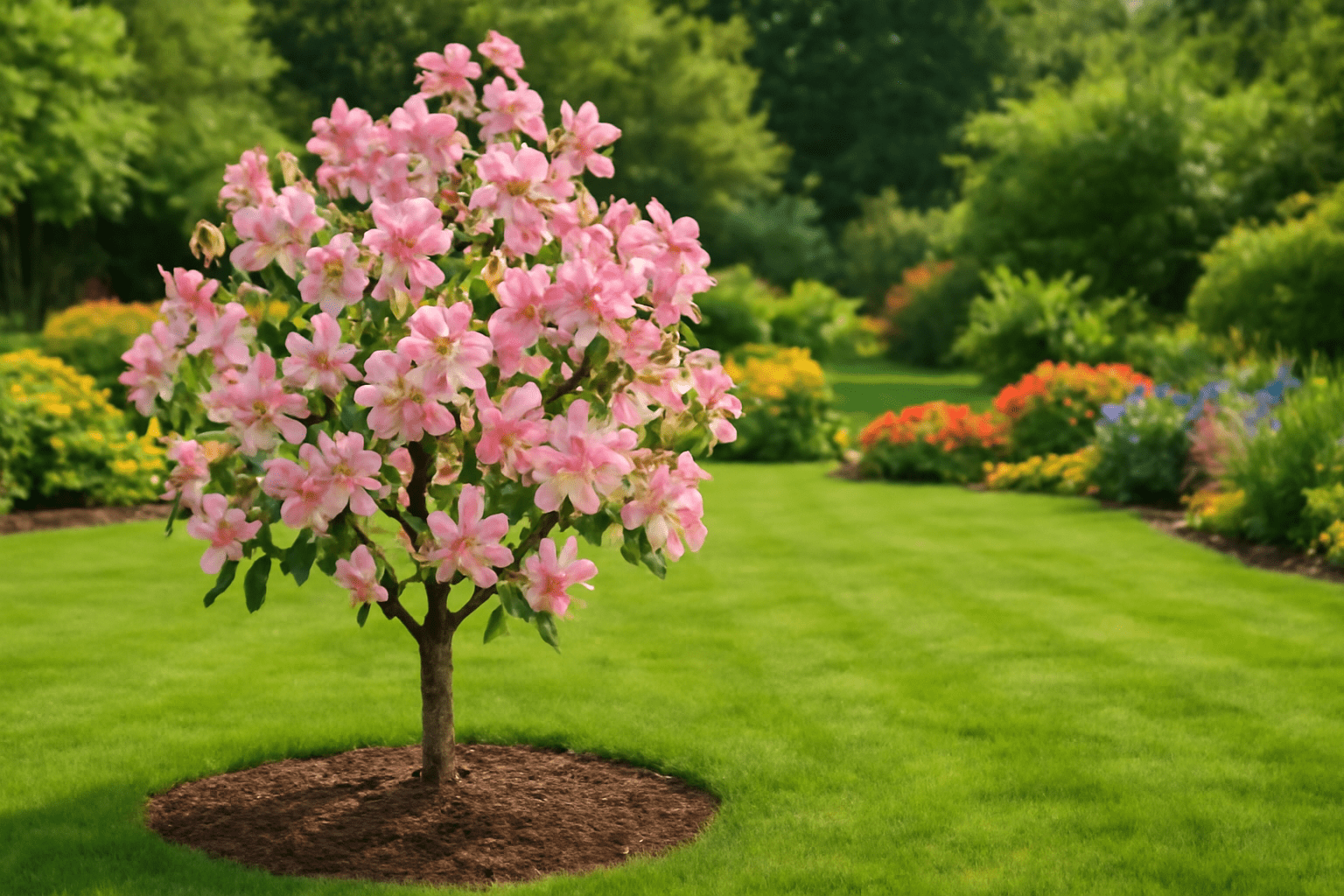
Remember 🧠, the key 🔑 to a thriving tree 🌳 lies in understanding its needs 🧑🌾—whether it’s planting 🌱 in the right spot 📍, providing consistent care 🧑🍳, or managing common problems ⚠️ that may arise 🌱. By following the tips 💡 and tricks 🎯 outlined in this guide 📖, you’ll be well on your way 🚶♂️ to growing a healthy 🌱, beautiful flowering apple tree 🌳 that will brighten your garden 🏡 for years to come 🕰️. 🌿
Stay patient ⏳, attentive 👀, and enjoy the process 🧑🌾 of watching your tree 🌳 grow 🌱 and bloom 🌸!
Frequently Asked Questions (FAQs)
How long does it take for a flowering apple tree to bloom?
It usually takes about 3-5 years for a flowering apple tree to start blooming, depending on the variety and growing conditions. Dwarf varieties may bloom a bit sooner, while standard trees take longer to reach full bloom.
Can I grow a flowering apple tree in a pot?
Yes, you can grow a flowering apple tree in a pot, especially dwarf varieties. Make sure the container is large enough for the tree’s roots, has good drainage, and is placed in a sunny spot. Regular watering and proper pruning will help it thrive.
What’s the best time to plant a flowering apple tree?
The best time to plant a flowering apple tree is in early spring or fall, when the tree is dormant. Spring planting gives the tree time to establish roots before the summer heat, while fall planting allows roots to grow before winter sets in.
How much sunlight does a flowering apple tree need?
A flowering apple tree needs at least 6-8 hours of direct sunlight each day to thrive. Without enough sunlight, the tree may produce weak blooms and have poor fruit production. Ensure it’s planted in an area where it can get plenty of sun.
Why aren’t my flowering apple tree’s flowers blooming?
If your tree isn’t blooming, it could be due to over-fertilization (especially nitrogen), improper pruning, or a lack of pollination. Make sure you’re using a balanced fertilizer, prune correctly, and consider planting a second tree nearby to improve cross-pollination.
How do I keep pests and diseases from affecting my flowering apple tree?
Regularly inspect your tree for pests like aphids and caterpillars. Use organic insecticides or neem oil to control infestations. To prevent diseases like apple scab or fire blight, remove fallen leaves, avoid overhead watering, and prune infected branches promptly.
How often should I water a flowering apple tree?
Water your flowering apple tree deeply once a week, especially during dry spells. The soil should be moist but not soggy. During the growing season, increase watering, but ensure the tree isn’t sitting in waterlogged soil to prevent root rot.
What type of fertilizer should I use for my flowering apple tree?
Use a balanced, slow-release fertilizer (such as 10-10-10) in early spring, just before the tree starts to grow. Avoid high-nitrogen fertilizers, as they can lead to excess foliage growth and fewer blooms. Always follow the recommended amount for your tree’s size.
